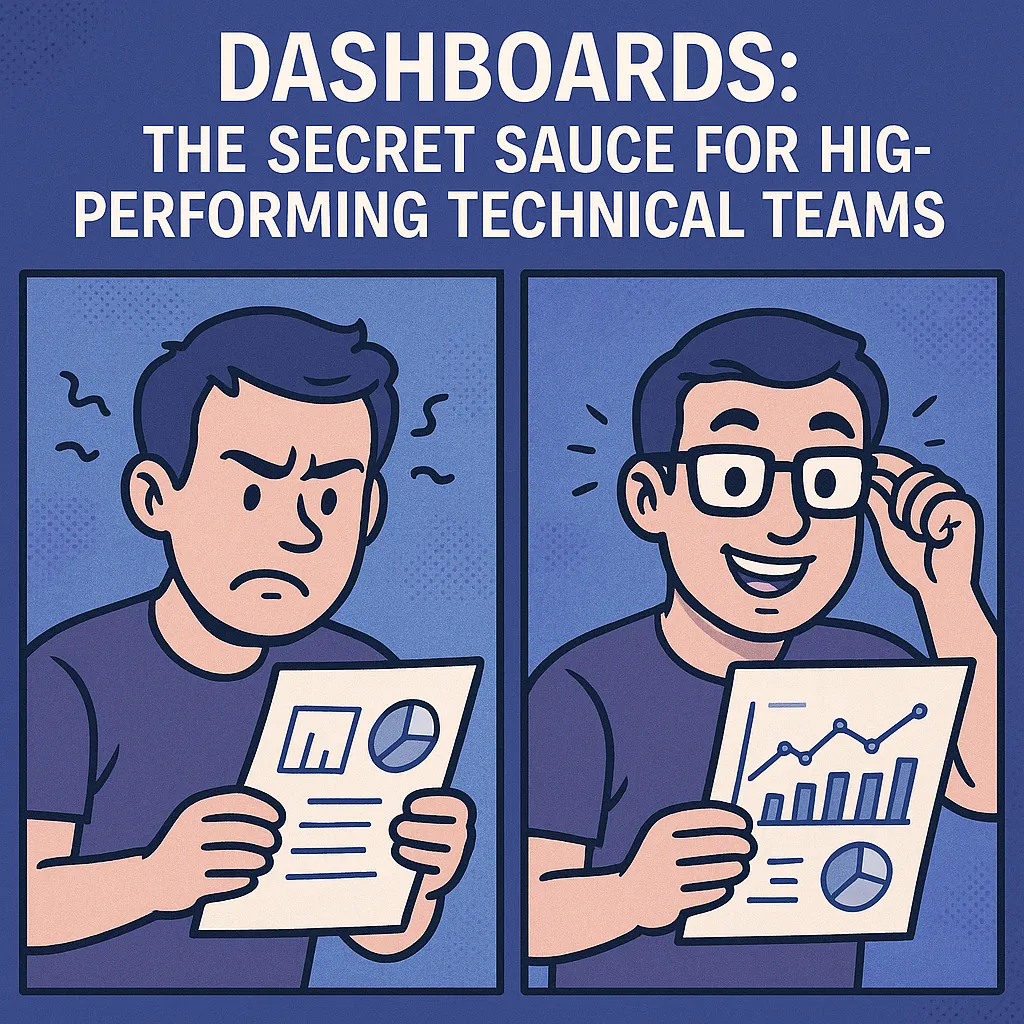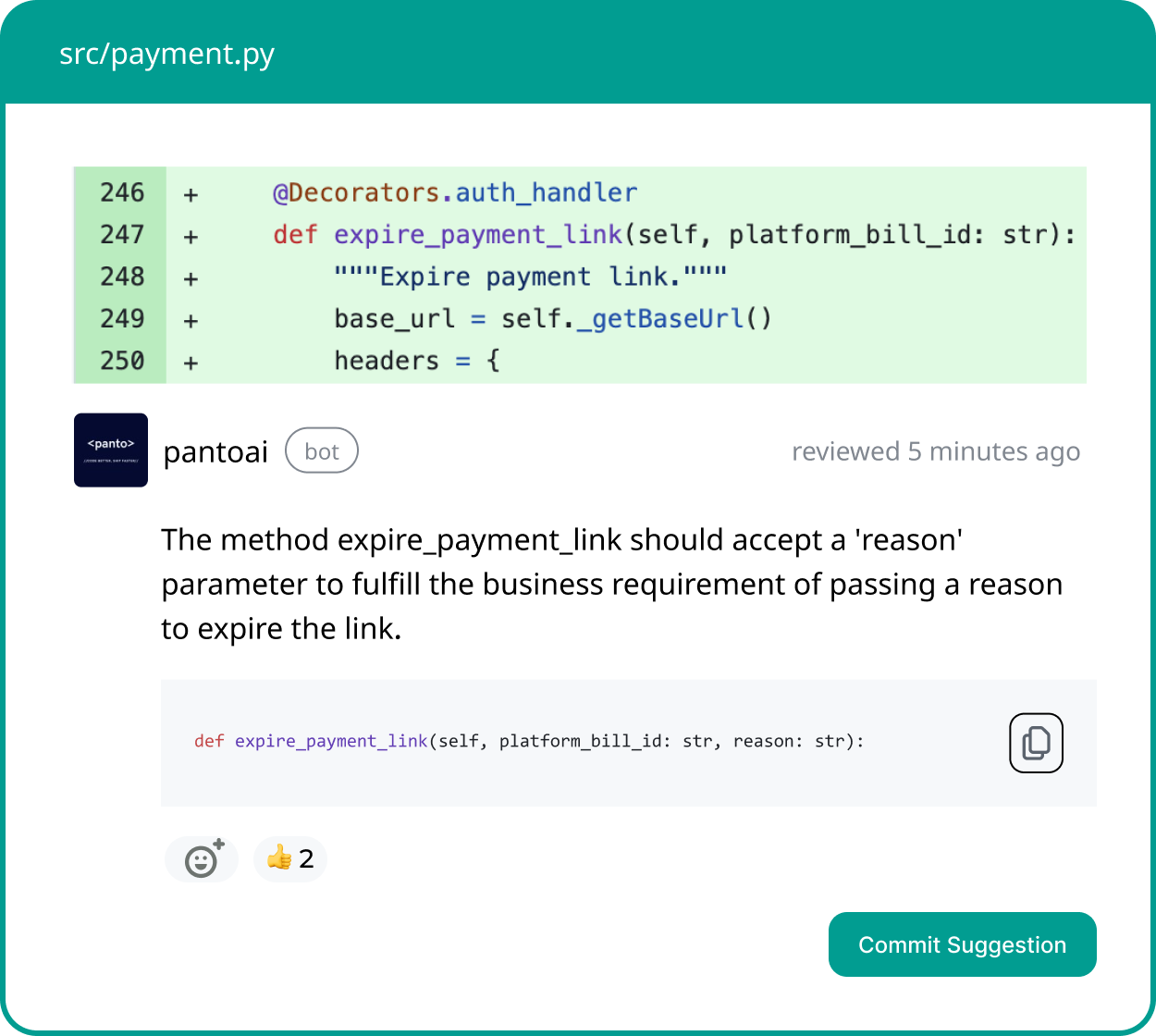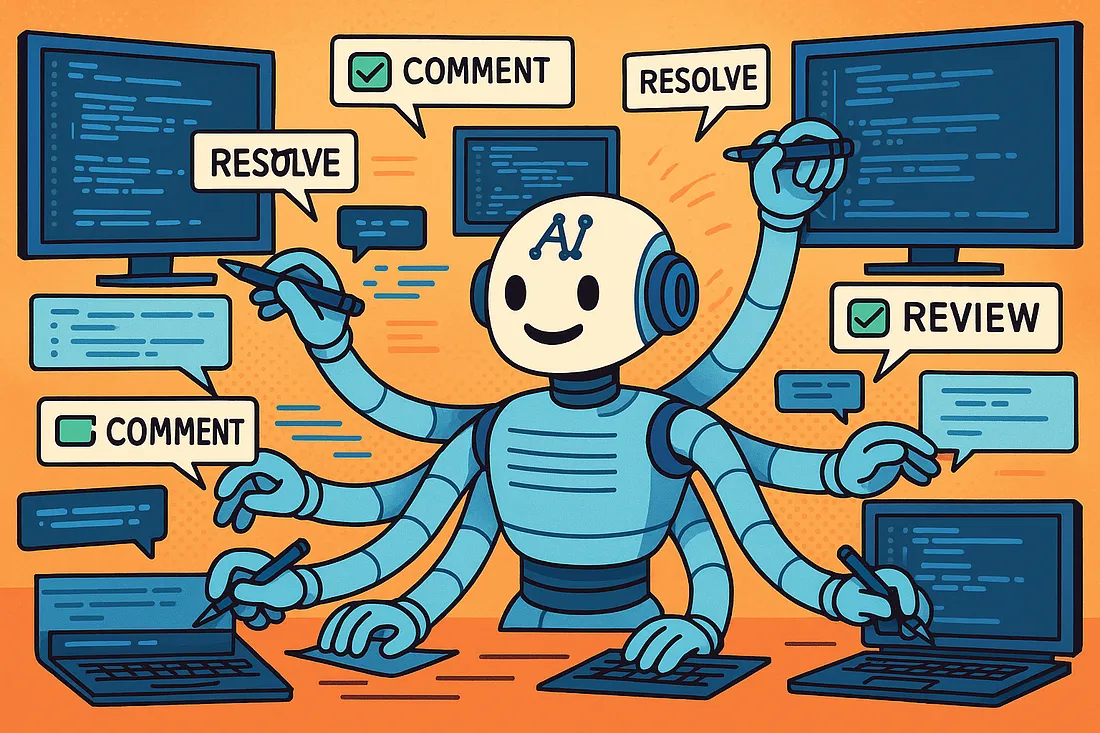Dashboards: The Secret Sauce for High-Performing Technical Teams

If you’ve ever worked on a technical team, you know the feeling: juggling deadlines, tracking pull requests, keeping an eye on code quality, and — oh yes — fielding the occasional “How’s it going?” from your manager. In this whirlwind, dashboards are the unsung heroes that turn chaos into clarity, helping teams not just survive, but thrive.
Why Dashboards Matter
Dashboards are more than just pretty charts. They’re the control center for modern engineering teams. They give everyone, from developers to CTOs, a real-time window into what’s happening: how many pull requests were merged, average merge times, code review comment trends, and even who’s crushing it (or needs a nudge).
Here’s why great dashboards make all the difference:
- Real-time visibility: See project status, task completion, and resource allocation instantly, so you can spot bottlenecks and adjust on the fly.
- Better decision-making: Dashboards visualize complex data, making it easier to understand trends, track KPIs, and prioritize work that matters.
- Faster feedback loops: Spot issues early — like slow PR merges or a spike in review comments — before they snowball into bigger problems.
- Data-driven culture: Everyone, not just data wizards, can see how their work fits into the bigger picture, boosting transparency and accountability.
- Continuous improvement: By tracking metrics over time, teams can celebrate wins, identify areas for growth, and experiment with process tweaks that actually move the needle.
What Makes a Dashboard Successful?
The best dashboards are minimal, intuitive, and laser-focused on solving real user problems. They don’t try to do everything for everyone — instead, they deliver the right insights to the right people, when they need them.
For example, at Panto, we learned that engineering managers crave quick access to metrics like PRs opened and merged, average merge times, and review coverage. We started with daily email reports tailored to our ideal users, gathering feedback before building a dashboard that puts these metrics front and center.
Our dashboard now lets users:
- Track PR trends, review activity, and comment resolution rates at a glance
- Compare performance before and after adopting Panto AI (spoiler: 45% faster PR merges!)
- Drill down into repository or developer-level insights, without information overload
- Surface actionable data, like top performers or areas needing support, via clean dropdowns and visual cues
This progressive disclosure approach — starting simple, then revealing more detail as needed — keeps things user-friendly while still powerful for those who want to dig deeper.
Dashboards in the Wild
We’re not the only ones obsessed with dashboards. Companies across industries use them to drive results:
- DORA Metrics Dashboards: Used by high-performing engineering teams to track deployment frequency, change failure rate, and mean time to recovery, leading to faster, more reliable releases.
- BI Dashboards: Businesses have slashed time spent on data wrangling by 80% and cut analytics costs by 70% after rolling out modern dashboards.
- Custom Internal Portals: Teams at top tech firms use dashboards as their mission control, centralizing everything from code quality checks to incident response metrics.
Building for the Future
At Panto, we’re always iterating. Our dashboard started with the basics, evolved through user feedback, and now even has space for new features like Software Composition Analysis (SCA) — so teams can spot security issues right in their workflow.
The lesson? A dashboard isn’t just a tool — it’s a living, breathing part of your team’s culture. When built thoughtfully, it empowers everyone to do their best work, together.
So, whether you’re wrangling code, managing projects, or just trying to keep your boss happy, remember: a great dashboard is your secret weapon. And if you want to see what that looks like in action, well…come check out what we’re building at Panto. Your team (and your sanity) will thank you.
Your AI code Review Agent
Wall of Defense | Aligning business context with code | Never let bad code reach production
No Credit Card
No Strings Attached


How AI-Driven Development Tools are Revolutionizing the Coding Experience
Remember the days when coding felt like solving a Rubik’s Cube in the dark? Yeah, those days are over. Welcome to the era where AI is your coding buddy, and everything just got a lot smarter — and a lot more interesting.
Jun 30, 2025

How AI Code Review Tools Are Transforming Code Quality and Developer Velocity
Why teams are adopting AI reviewers to boost code quality, cut review time, and scale engineering excellence. Code reviews are a cornerstone of healthy engineering teams. They catch bugs, promote learning, and keep codebases clean. But as teams scale, the code review process starts to break. Pull requests pile up. Senior engineers get swamped. Review quality drops, or slows delivery. Now, a new kind of teammate is stepping in: the AI-powered code reviewer. These tools don’t just check formatting. They surface logic issues, enforce best practices, and provide structured feedback. The result? Faster shipping, fewer bugs, and cleaner code across the board.
Jun 26, 2025

Why Should AI Review Your Code?
Modern software development moves faster and at a larger scale than ever. Engineering managers and tech leads know that thorough code review is essential for quality, but human-only reviews often become a bottleneck. As one [analysis](https://linearb.io/blog/ai-code-review#:~:text=Manual%20code%20reviews%20slow%20teams,own%20work%20and%20review%20tasks) notes, manual reviews “slow teams down, burn reviewers out, and miss things that machines catch in seconds”. In response, AI-powered code review tools are gaining traction. These tools apply machine learning and large language models to analyze code changes instantly, offering speed, consistency, and scalability that complement human judgment. In this blog we’ll explore why AI review can outperform solo humans in many situations, what pitfalls it addresses, and how teams can combine AI and human reviewers to accelerate delivery without sacrificing quality.
Jun 25, 2025

Integrating SAST into Your CI/CD Pipeline: A Step-by-Step Guide
If you’re looking to supercharge your software delivery while keeping security tight, integrating Static Application Security Testing (SAST) into your CI/CD pipeline is a game-changer. It’s not just about catching bugs — it’s about making security a seamless part of your development workflow, so your team can deploy confidently and quickly. Here’s how you can do it, step by step, with a little help from Panto AI.
Jun 24, 2025

Revolutionizing Code Reviews: How AI is Transforming Technical Debt Management
Let’s be honest: every software team, no matter how disciplined, wrestles with technical debt. As a CTO or Product Engineering Manager, you’ve seen how those “just this once” shortcuts and legacy code patches add up. Before you know it, your team is spending more time untangling old code than building new value. But here’s the twist: AI code reviews and AI code tools are turning the tables on technical debt. The results are game-changing.
Jun 24, 2025

Optimize Your Codebase with Custom AI Training: Achieving Better Review Outcomes
Imagine a world where every code review is lightning-fast, every vulnerability is caught before it ships, and every suggestion aligns perfectly with your team’s unique style and security policies. That’s not just a dream, it’s the reality for teams who have embraced AI code tools, but only if they take the crucial step of training AI on their own codebase. As a CTO or Product Engineering Manager, you’re already juggling speed, quality, and security. The question is: are you ready to unlock the next level of software excellence with AI code reviews that truly understand your context?
Jun 21, 2025